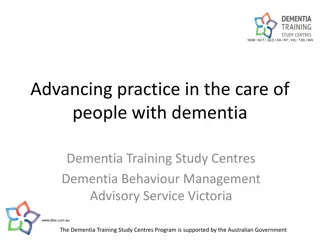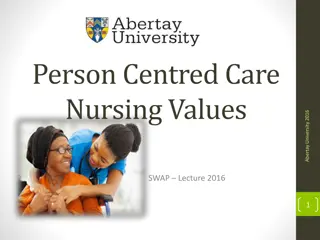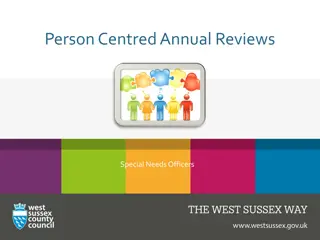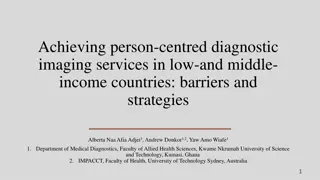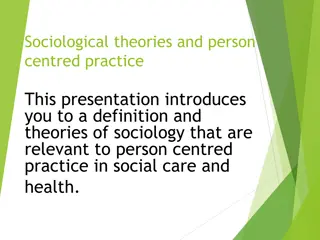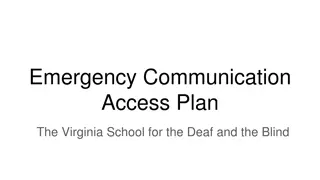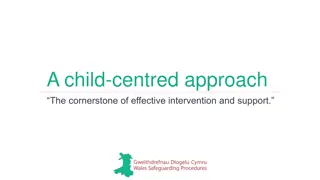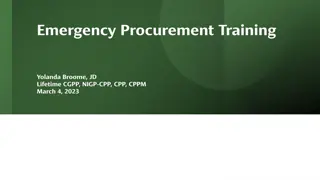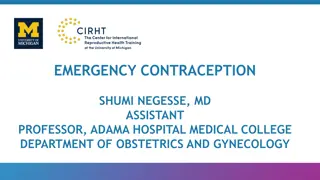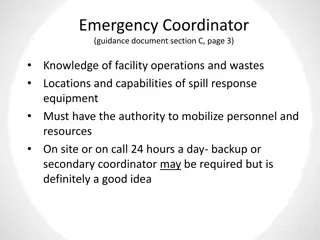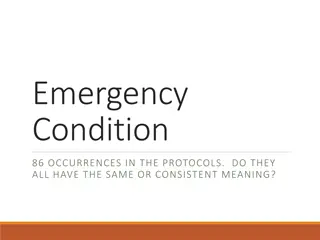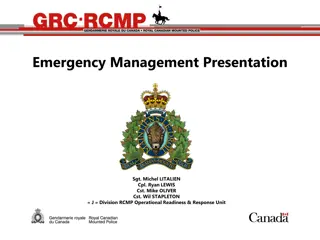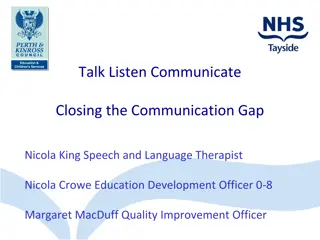Enhancing Communication in the Emergency Department Through Person-Centred Language
Effective communication in the emergency department is crucial for patient care. This presentation discusses the importance of person-centred language, understanding responsive behaviours, and implementing best practices to improve interactions with patients. By being specific, objective, and respectful in our language, we can create a more supportive and empathetic environment for those in need of medical assistance.
Download Presentation

Please find below an Image/Link to download the presentation.
The content on the website is provided AS IS for your information and personal use only. It may not be sold, licensed, or shared on other websites without obtaining consent from the author. Download presentation by click this link. If you encounter any issues during the download, it is possible that the publisher has removed the file from their server.
E N D
Presentation Transcript
Person-Centred Language in the Emergency Department 1
Module Objectives In this module we will do the following: 1. Discuss why person-centred language matters in the ED 2. Understand responsive behaviours 3. Explore how to put person-centred language into practice in the ED 2
Why does person-centred language matter in the ED? How you communicate with and about a patient impacts He grabbed my wrist when I turned him on his left side. 1. Safety in the workplace 2. Transfer of accountability 3. Patient outcomes 3
Understanding responsive behaviours Patients who have can experience a change in language executive function complex attention perceptual-motor social cognition and might use dementia delirium psychosis acquired brain injury stroke substance-related intoxication/withdrawal actions, gestures, noises, or words to express or communicate something important about their personal, social, or physical environment Nearly 90% of people with Nearly dementia will experience dementia will experience responsive behaviours responsive behaviours of people with 4 Definition Source: PCL. Person-Centred Language: An Overview for Long-Term Care Team Members by co-developed by Behavioural Supports Ontario and the Ontario Centres for Learning, Research, and Innovation in Long-Term Care (CLRI) at the Research Institute on Aging (RIA) in collaboration with MacHealth at McMaster University, and supported by an expert panel.
Putting Person-Centred Language in practice in the ED What this means Example A brief description that includes precise details on the who, what, where, when, and why something happened While attempting to assist to a standing position, Mrs. Y. pulled the physiotherapist s hair and screamed SPECIFIC A description that is based solely on observable or verifiable facts and devoid of personal opinions Mr. B. took off his gown and walked out of the room OBJECTIVE Language that avoids labelling or infantilizing the patient Mr. S. may spit when care is provided. Wear a face shield to protect yourself RESPECTFUL 5
Word Swap Instead of Confused Try this Patient not oriented to time or place Patient not able to follow instructions Patient struggling to make coherent statements or express self" Agitated Patient leaning forward on edge of chair, voice getting louder Patient clenching jaw Patient appears frustrated and is pacing around the room Patient shaking siderails on bed Aggressive Patient attempts to slap caregiver s hand when giving medications While attempting to obtain bloodwork, patient shouted, leave me alone and pushed nurse away 7
Are these words no longer allowed in the ED? MYTH I must never use words like "confused" or "aggressive" in patient documentation. FACT There may be occasions when I need to use words like "confused" or "aggressive" and when I do, I will attempt to add specific and objective descriptions of behaviour. 8
Summary Using patient-centred language promotes workplace safety, better transfer of accountability and better health outcomes. Win-win for patients and the care team. Alternately, using non-patient centred language can make a bad situation worse, and can cause un-intentional and irreversible harm along the patient s healthcare journey. Remember: Patients with cognitive impairment may communicate differently (such as with physical gestures) and that all behaviours have meaning Communicate with and about patients using language that is specific, objective, and respectful and avoid using words that label patients 9
References American Psychiatric Association. (2013). Diagnostic and statistical manual of mental disorders (5th ed.), American Psychiatric Association, Arlington, VA. Cerejeira J., Lagarto, L. and Mukaetova-Ladinska, E.B., (2012). Behavioral and psychological symptoms of dementia. Frontiers in Neurology, 3, 1- 21. https://doi:10.3389/fneur.2012.00073 Health Quality Ontario, Behavioural Symptoms of Dementia: Care for Patients in Hospitals and Residents in Long-Term Care Homes, 2016 Lyketsos, C.G., Steinberg, M., Tschanz, J.T., Norton, M.C., Steffens, D.C., Breitner, J.C.(2007). Mental and behavioral disturbances in dementia: findings from the Cache County Study on Memory in Aging .American Journal of Psychiatry, 157: 708-714. National Institute on Aging (2021). What is dementia? Symptoms, types and diagnosis. Retrieved from https://www.nia.nih.gov/health/what-dementia-symptoms-types-and-diagnosis Rizzi, L., Rosset, I., & Roriz-Cruz, M. (2014). Global epidemiology of dementia: Alzheimer's and vascular types. BioMed research international, 2014, 908915. https://doi.org/10.1155/2014/908915 Sachdev, P.S., Blacker, D., Blazer, D. G., Ganguli, M., Jeste, D.V., Paulsen, J.S., & Petersen, R.C. (2014). Classifying neurocognitive disorders: the DSM-5 approach. Nature Reviews Neurology, 10, 634 642. doi:10.1038/nrneurol.2014.181 The Health Foundation (2014). Person-centred Care Made Simple: What Everyone Should Know about Person-centred Care. Retrieved from: https://www.health.org.uk/sites/default/files/PersonCentredCareMadeSimple_0.pdf 10


